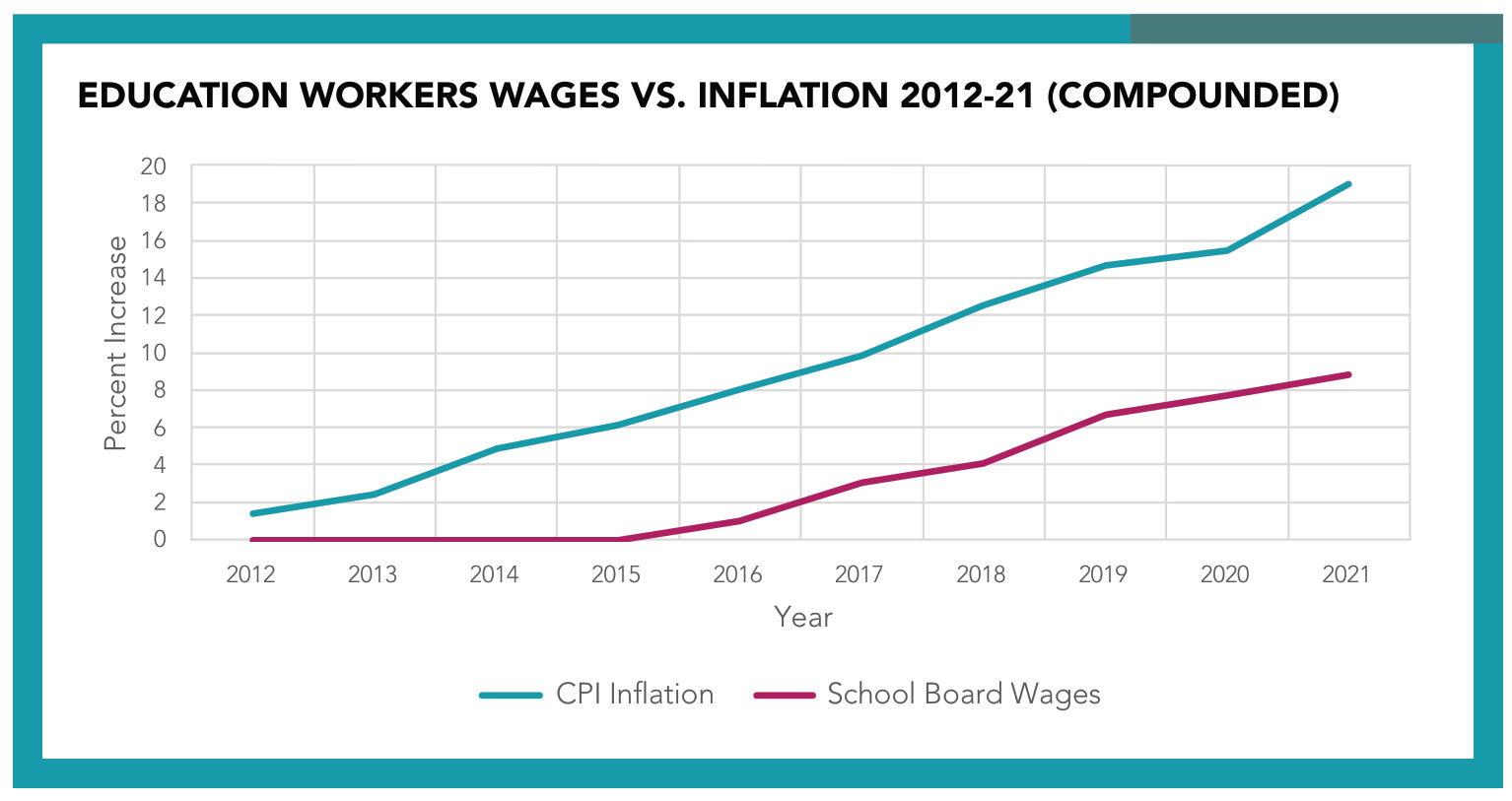
Education Workers' Wages: the impact of ten years of cuts
Over the past decade, wage increases that have trailed inflation have resulted in almost $1.3 billion in cost savings just from CUPE members’ incomes. In-year savings for 2021 are almost $225 million. CUPE annual income would be $4085 higher in 2021 if this money had been allocated equally to 55,000 members. Over time this wage gap has had profound negative effects on education workers’ financial and personal wellbeing. But the issues have extended to school boards themselves who are facing significant recruitment and retention problems related to uncompetitive wages.
Report: Despite how important they are to students’ success and the success of schools as a whole; education workers do not get the recognition they deserve. They have been subject to longstanding understaffing and overwork, as well as legislative attacks on their wages. As a result of the latter, school board workers’ wages have eroded significantly over the past decade. Legislative restrictions on free collective bargaining like Bill 115 (under the previous Liberal government) that froze wages for two years, and Bill 124 (under the current Conservative government) that limited increases to 1% per year for three years, contributed to long-term loss of real income. Overall, education workers’ wages have increased by only 8.8% (compounded) from 2012 to 2022. Over that same period of time inflation in Ontario has been 19%.1 Recently, the provincial government projected inflation in 2021 is topping 3%.2 Reports in November 2021 show inflation as high as 4.7%.3 The imposition of 1% limit on wage increases through Bill 124 further eroded their purchasing power.